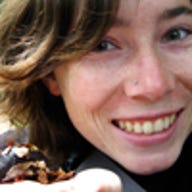Ready for your closeup? Surveillance science advances quickly

Nearly everywhere you go, whether it's an airport, a shopping mall, or a local university, you're on camera.
Surveillance installations are ubiquitous, tacked to ceilings, hidden in corners or staring down at you from broad, glass orbs. The science behind those lenses is advancing steadily: both in the form of new technology such as facial recognition or predictive modeling and in the shape of strategies guiding new places to hide the cameras themselves.
Where did he go?
One of the biggest challenges when it comes to setting up a good surveillance system is mapping out coverage. It's difficult (and expensive) to install cameras that track an entire area, so most installations have blind spots - places where the cameras can't "see." People disappear off the side of one screen and reappear later on another. What they do in between is a mystery.
"What people have done traditionally is to measure how long it takes for people on average to move from one camera to the next, and then to wait for that time to elapse, and then at that time do the search for that person," says Andrea Cavallaro, a computer scientist and director of Queen Mary, University of London's Centre for Intelligent Sensing.
Cavallaro thought there might be a better way. So, he and his team recently built an algorithm that takes other information into account -- things like the floor plan of the area and a behavioral model that predicts where people are likely to move.
"People tend to be attracted to shops, elevators, and exits, and at the same time try to avoid different obstacles, like walls," Cavallaro says.
This might seem obvious, but combining those data points into a closed circuit surveillance system can make it easier to track people as they move around.
They're watching you
Another challenge is where to place cameras. Standard surveillance systems are nestled in the ceilings of stores and public places. But that makes it hard to recognize faces or to see details that can be used to distinguish individual people. In many ways, people look quite similar from above.
The best place for a camera, if you want it to recognize faces more easily and accurately, is at face level. So that's exactly what Max Cantanese, the CEO of Italy's Almax Group, did with his Eye See Mannequins, which come equipped with a camera inside them.
The Eye See mannequins caused a stir when they were released, because shoppers didn't exactly like the idea of a mannequin watching them. In most cases, however, the cameras installed in them are classified as blind. That is, they characterize the person who walks by - such as adult male, Caucasian - and store that information but no pictures.
Some of Almax's mannequins, of course, do record images of actual individuals. But Cantanese points out that they're no different from the cameras recording on the ceiling. "It's not spying on you and sending a message to your boyfriend or girlfriend," he laughs.
Beyond security
Collecting all this data about people serves far more than one purpose. In public spaces, knowing where people move can tell architects whether they designed the space well or not. "It is not only about security," says Cavallaro, "but the information that is collected with these toes of models can also help architects and designers to improve what has been designed based on how the space has been used."
For Cantanese, the data the Almax mannequins collect is priceless customer information, especially about where different kinds of people congregate at different times.
For example, in one case, a store mannequin observed a spike in visitors under the age of 20 around 4 p.m. each day. The store manager realized there was a school nearby, and introduced a kid's line of clothing that now accounts for 11 percent of total store sales.
LIke it or not, the combination of these advances - from better camera quality and placement to facial recognition and predictive modeling - is making for more sophisticated surveillance everywhere we go.
Researchers know where you're going, where you're likely to go, and how often you'll return. Businesses of all sizes will use that information not just to keep their retail and office spaces more secure, but to improve them, and design them more efficiently in the future. So smile, you're on camera. Get used to it.
Image: epSos, Flickr
This post was originally published on Smartplanet.com
